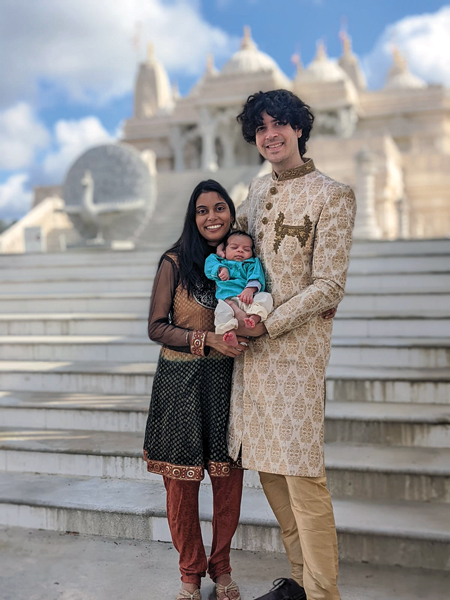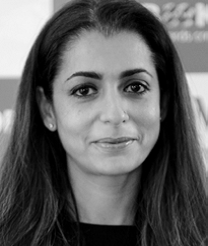Talk Time: Building Bridges with Introspection and Openness

Crystal Kadakia, a chemical engineer who became a management consultant, has written four books and given two TEDx talks besides many keynote speeches. She credits her own experiences for the success she’s had in bringing varying perspectives to forge common ground in the workplace and beyond. Kadakia shines a light on her latest book, Social Equations: The STEM Professional’s User Guide to Building Positive Relationships, co-written with Prof. Janette Williams.
How did your parents help nurture their Indian heritage in what you delightfully describe as the “brisket- eating yet liberal community” of Austin, Texas? How did you navigate the inherent and inescapable differences between you and your peers?
My mom did her best, but it wasn’t easy. My sister and I were the only Indian students for most of our school years. We went to a Radha Krishna temple about every other Sunday and, with incredible effort from my mom, visited India every two years. That helped me so much, to really be there and experience the culture immersively. We learned Gujrati and called family in India regularly. We watched Bollywood movies whenever possible and got DVDs with ripped, low-res movies from the Indian store.
In part, however, it's what my parents weren't able to do that really shaped me.
Unfortunately, the arranged marriage did not work out and they separated when I was six. After their divorce, my parents had their hands full with navigating America’s workplace and building livelihoods from scratch, in very up and down economic times. Especially at that time, with the stigma of divorce, we quickly lost connection to and support within the Indian community.
I became even more of an ABCD (American Born Confused Desi). Even my parents couldn’t relate to my experience—they both came home to an intact family growing up, surrounded by people who look just like them. Not only was I bridging the gaps with my peers, but also with my heritage and parents. I'm seen as Indian, but not really Indian. And also as American, but not “American,” [because] we act as though that terminology only belongs to white Americans.
It motivated me to try hard to understand and build bridges with everyone and anyone. I became a perspective gatherer. If a particular way of being seemed to be a barrier, I found another way. This is something I hope to instill in my own son.
You graduated as a chemical engineer and worked in a male-dominated field at a Fortune 100 company. What galvanized your interest in examining interpersonal interactions through an analytical lens?
Frankly, I was bored and I wanted to make a real difference. When I studied chemical engineering, I was fascinated to learn every day how the world works. But when I went to work, the biggest problem of every day was how to save a few cents on the production line for products that are unsustainable and harming the planet. Today, if we don’t collectively move to make changes in our complex and large-scale systems, humanity will suffer from the impacts of climate change, failed democracies, and unrestrained capitalism.
I was thrilled to find that there were entire fields of study just as deep as my engineering texts—hypothesizing and understanding people dynamics, from within self to large scale societal patterns. Just like in my school days, I found people problems to be far more challenging and meaningful to unpack and navigate.
You talk about having a lifetime of practice in bridging differences and that possibilities live in what’s different. Can you share more about your journey and what you mean by that?
By the time I entered the workforce, I had already been continually bridging the differences in my own life between Indian and Western and between each of my family members’ very different points of view. I especially spent and continue to spend so much time trying to bridge individualism and collectivism. When I started working, I immediately found myself in situations where I was helping older managers and leaders understand younger employees.
When I started my own business at 25, I spent the majority of my time keynote speaking and consulting with teams of older, typically white, male executive leaders, helping them bridge their upbringing and values with the changes brought by the digital age—the visibility of diversity, flexibility, immediacy, to name just a few.
Bridging to me is not just about understanding; it’s also about movement towards a third way. That third way is a new possibility that no one has considered, but they create anew when they explore what they know and feel is right and what others know. The best bridge is when we intentionally take the best thinking of both worlds and move forward in that direction. And we drop what isn’t useful about either world.
 You co-authored Social Equations for your father, an electrical engineer. You were touched when he said that if he had this book earlier in his career, he could have been better on teams and maybe even become a manager. Is there a specific topic in the book he was particularly drawn to?
You co-authored Social Equations for your father, an electrical engineer. You were touched when he said that if he had this book earlier in his career, he could have been better on teams and maybe even become a manager. Is there a specific topic in the book he was particularly drawn to?
UCSD [University of California San Diego] Professor Janette Williams and I co-authored Social Equations to address a big gap we see for STEM (science, tech, engineering, and math) professionals: social dynamic skills and fundamental knowledge.
My father, as the eldest son in his family, was raised with values, beliefs, and style that can clash with typical Western workplace culture. I was really affected by watching my dad work very hard and be so smart, but not be able to contribute as much as he should have been able to.
One topic that I hope impacted him was “The Four Fatal Fears // Managing Your Reactions.” We share a model from psychologist Maxie Maultsby, in which you are asked to consider if your reactions are typically out of one or more four fatal fears: fear of being wrong, fear of emotional discomfort, fear of failure, and the fear of rejection. For many engineers, and especially Indian engineers, knowing the answer and being right is perceived as very important. But if you don’t know the answer, reacting out of this fear can create an ego-driven or aggressive approach that impacts relationships negatively. It leads to defensive stances such as “I’m right, you’re wrong” and “Show me the proof” to cover your own lack of knowledge—and harms the work.
The intuitive layout of your book invites readers who face challenges to “simply turn to the topic you need to better understand the social dynamics at play—from interpersonal challenges to working in and leading teams.” What feedback have you received from readers and reviewers?
The biggest surprise for me is how this book has been read and received by those outside the STEM profession. A 90-year-old retired doctor read it and recounted patient interactions that exactly demonstrated a topic. A 19-year-old college student and musician admitted it was over his head, but when given a music metaphor, instantly understood the social dynamics at play. Many have commented on the comprehensive nature of the book and how there really is something for everyone— and everything is covered. We intended it as a reference guide. I hope it is on people’s desks or nightstands and referred to over and over.
There is a chapter in Social Equations titled “Pausing and Creating Space, Mindfulness.” Shine a light on the mindfulness aspect in the workspace.
Mindfulness at work is about managing your reactions, keeping your focus in the right place, and not bringing too much home with you. We Indians are the originators of meditation, which makes sense because finding quiet in a country of one billion is not an easy task!
At work and in relationships, meditation should not be limited to a formal moment of practice, but rather the ability to informally wield it fluidly in the moment so you can pause before reacting and act with thoughtful intention. This is important in today’s digital age because we have constant data in our face and we need to be able to cognitively, with our brain, step back so we don’t get burned out. It also helps us be more creative and strategic. In the chapter, we share that “spending time in a mindful state allows you to self-source wisdom and insights, rather than outsourcing that brilliance to someone else or crowdsourcing brilliance from external sources.”
Corporations, businesses, and educational institutions of all dimensions now emphasize DEI—diversity, equity, and inclusion. Have their overtures led to salubrious integration? Conversely, does the overt celebration of diversity that may override merit spawn resentment in the workplace and academic establishments?
I think we are more aware than ever that differences are around us. There is less assumption that everyone has the same values and ways of being as the majority— and in fact, the majority is changing to be composed of more minorities than ever before. I think people are more curious than judgmental.
From a systemic perspective, I believe we have a long way to go. Diversity without inclusion spawns resentment. Diversity is bringing the differences in the room, which could be seen as HR’s job. Inclusion is about each person every day creating an environment where other people feel like it’s safe to take risks showing up as themselves and bringing their voice to the room. And the output of equity and inclusion is better products for society that address all people’s needs and elevate their potential. It’s also about giving credit to the people who contributed, not just the people who speak the business political language and are the loudest.

Author of Kismetwali & Other Stories, Reetika Khanna is an Atlanta-based freelance writer who likes to spotlight people with purpose. She has worked with ELLE as a senior features writer, and as an associate features editor with ELLE DÉCOR, Mumbai. For more, go to ReetikaKhanna.com
Enjoyed reading Khabar magazine? Subscribe to Khabar and get a full digital copy of this Indian-American community magazine.
blog comments powered by Disqus










